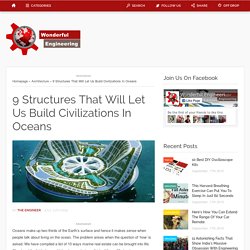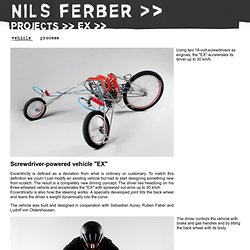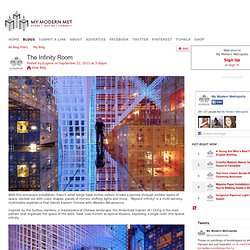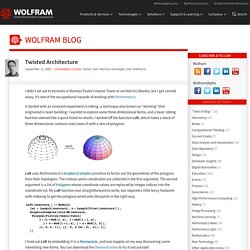

9 Structures That Will Let Us Build Civilizations In Oceans. Oceans make up two-thirds of the Earth’s surface and hence it makes sense when people talk about living on the ocean.

The problem arises when the question of ‘how’ is asked. We have compiled a list of 10 ways marine real estate can be brought into life. Check out the list below and let us know what you think of these 10 structures. There are about 27,000 abandoned oil and gas rigs in the Gulf of Mexico only and visionaries such as Ku Yee Kee and Hor Sue-Wern are able to have their way, they would transform these oil rigs into living quarters. As per their plan, they want to reconstruct the oil rigs into structures that are self-sufficient and equipped with marine research stations and apartment complexes. There are plans of setting up repurposed ocean liners that will serve as incubators for start-ups without worrying about laws and taxes. Although expensive, this is a feasible and viable option for coastal nations. This Church In NewZealand Is Made Completely From Trees. Barry Cox’s life has mostly revolved around two things; trees and churches.

He grew up in New Zealand and later on traveled throughout America and Europe while studying all kinds of churches and came back to New Zealand to start Treelocations, a business that is about moving trees. He Loves trees and the business allows him to move trees along with their roots to a new location. He has even re-located trees onto his own property saving them from being cut down. Once Treelocations became stable, his new project took shape. The idea struck him all of a sudden back in 2011. He then began planting trees. The walls have been created using Australian tea tree varietal using lush and thick foliage. The church was opened as Tree Church in January 2015 and after his nephew’s wedding, a number of marriages have taken place here. Browse Album. Future Computer by Jakub Záhoř & Yanko Design - StumbleUpon. Future Touch Tech This concept computer-of-the-future by designer Jakub Záhoř allows the user to operate the device anywhere they can find a glass surface.

The user simply attaches the central unit to any glass surface like a window or coffee table, switches on the power, and watches their system light up before their eyes. The display appears as an interactive hologram on the glass that the user merely has to touch to operate. It also makes for an easy, take-anywhere way to project photos and presentations or stream movies. Windex not included. Designer: Jakub Záhoř. EX - StumbleUpon. Using two 18-volt-screwdrivers as engines, the "EX" accelerates its driver up to 30 km/h.

Excentricity is defined as a deviation from what is ordinary or customary. To match this definition we couln´t just modify an existing vehicle but had to start designing something new from scratch. The result is a completely new driving concept: The driver lies headlong on his three-wheeled vehicle and accelerates the "EX" with sprawled out arms up to 30 km/h. Eccentrically is also how the steering works: A specially developed joint tilts the back wheel and leans the driver´s weight dynamically into the curve. The vehicle was built and designed in cooperation with Sebastian Auray, Ruben Faber and Ludolf von Oldershausen. The driver controls the vehicle with brake and gas handles and by tilting the back wheel with its body. The headlong position gives you an exiting driving experience.
- StumbleUpon. The Infinity Room. With this immersive installation, French artist Serge Salat invites visitors to take a journey through endless layers of space, decked out with cubic shapes, panels of mirrors, shifting lights and music.

“Beyond Infinity” is a multi-sensory, multimedia experience that blends Eastern Chinese with Western Renaissance. Inspired by the Suzhou Gardens, a masterpiece of Chinese landscape, the three-lined trigram of I Ching is the main pattern that organizes the space of the work. Salat uses mirrors as optical illusions, exploding a single room into spatial infinity. via [Architizer] Views: 422998 Tags: Serge Salat, The Infinity Room, architecture, design. - StumbleUpon. Fictional Subway System for the Entire World [MAP] Badass Bridge of the Day - The Daily What. Blog : Twisted Architecture. I didn’t set out to tie knots in Norman Foster’s Hearst Tower or wrinkle his Gherkin, but I got carried away.

It’s one of the occupational hazards of working with Mathematica. It started with an innocent experiment in lofting, a technique also known as “skinning” that originated in boat-building. I wanted to explore some three-dimensional forms, and a basic lofting function seemed like a quick ticket to results. I dashed off the function Loft, which takes a stack of three-dimensional contours and covers it with a skin of polygons. Loft uses Mathematica‘s GraphicsComplex primitive to factor out the geometries of the polygons from their topologies.
I tried out Loft by embedding it in a Manipulate, and was happily on my way discovering some interesting new forms. Even this trivial parameterization of a scaled and twisted half-sphere yields an amazing variety of forms, each of which suggests interesting avenues to explore.